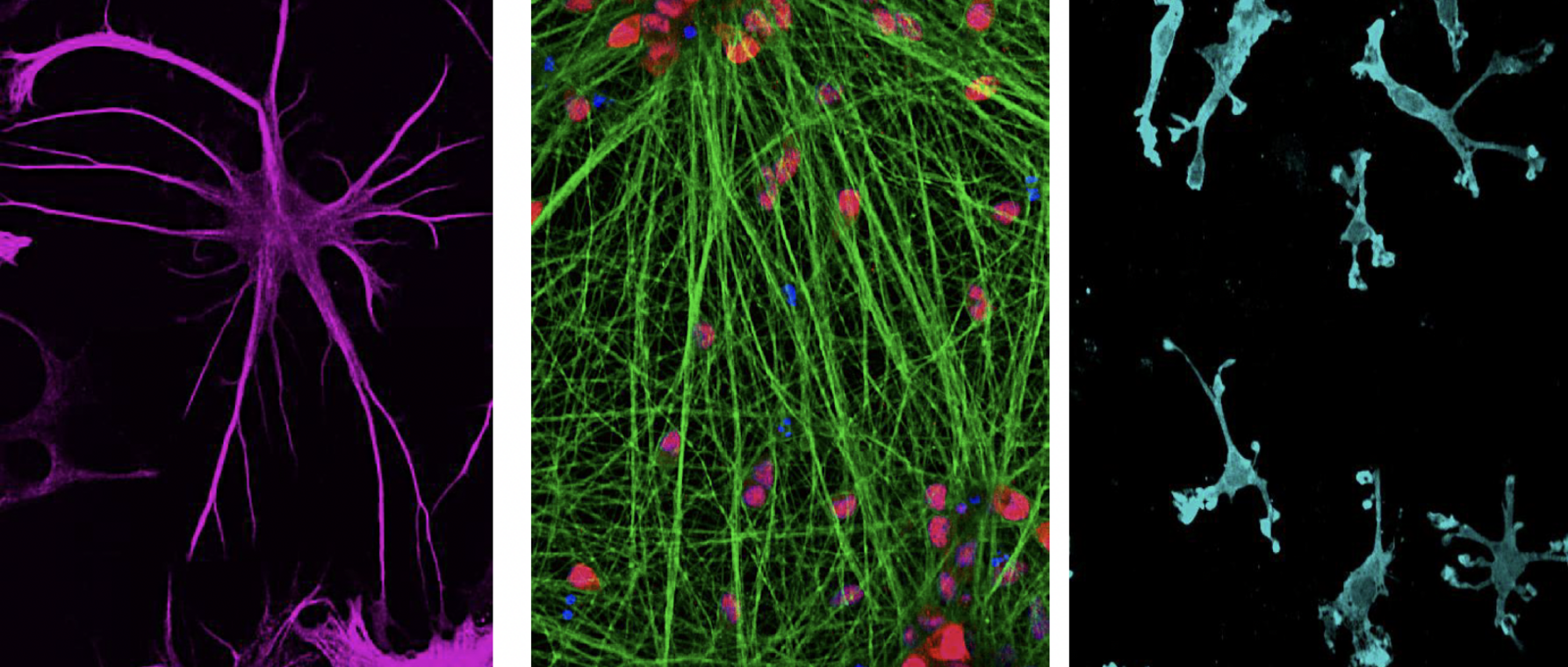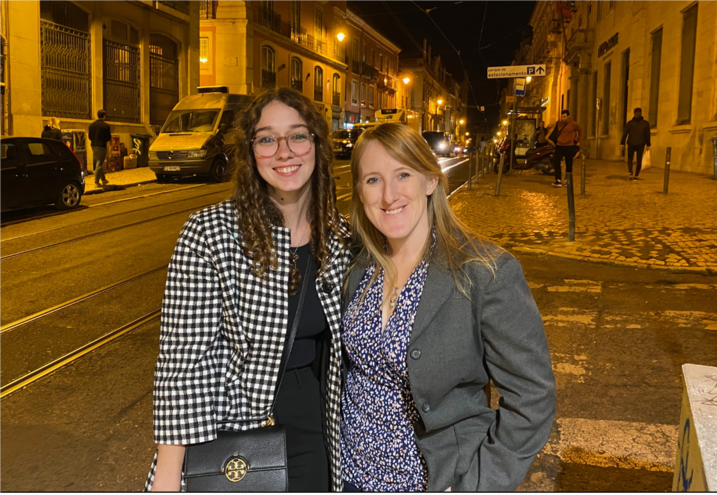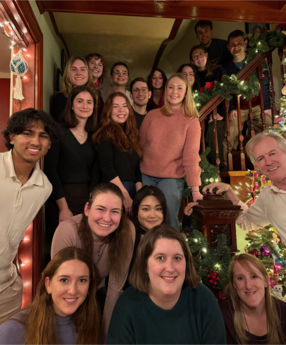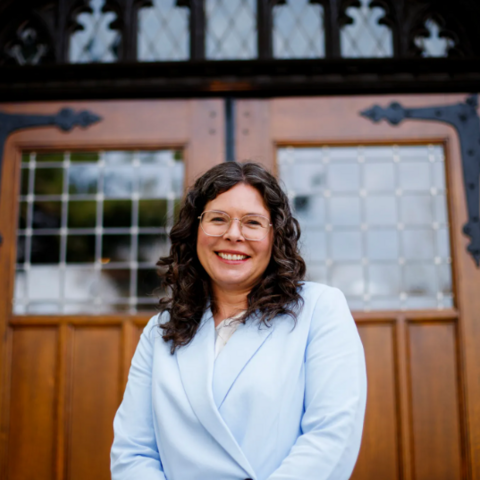Decoding Alzheimer’s
Lish studies how genetic factors impact the progression of Alzheimer’s disease—and provide hints to new treatments

Research at Risk: Since World War II, universities have worked with the federal government to create an innovation ecosystem that has yielded life-changing progress. Now much of that work may be halted as funding is withdrawn. Find out more about the threats to medical, engineering, and scientific research, as well as how Harvard is fighting to preserve this work—and the University's core values.
Over seven million Americans live with Alzheimer’s disease. Nearly 12 million more are involved in unpaid caregiving responsibilities for family members, friends, or other loved ones affected by Alzheimer’s or other types of dementia. Current therapies offer patients only modest relief. None cure or halt the disease.
“Neurodegenerative diseases like Alzheimer’s are devastating to patients and their families,” says neuroscientist Alexandra Lish, “and we have very limited treatment options for them, in part because we still need to better understand the mechanisms that are at play in these illnesses.”
Lish, who graduates from the Harvard Kenneth C. Griffin Graduate School of Arts and Sciences (Harvard Griffin GSAS) in May 2025 with a PhD in biological and biomedical sciences, wants to rewrite the script for Alzheimer’s sufferers by studying how genetics drive individual differences in the progression of the disease. Her work on an important protein provides new insights into the illness, how it progresses, and how it and other age-related brain illnesses might be treated.
For late-onset Alzheimer’s, the most common form of the disease, researchers have identified over seventy different genetic loci (positions in the genome) where specific alleles are associated with increased or decreased disease risk.
–Alexandra Lish
A Complex Disease

Alzheimer’s disease is notoriously difficult to study and treat because of the number of factors that contribute to its development and progression. Many different genes can influence a person’s risk and prognosis, depending on variations at certain locations in the DNA. “For late-onset Alzheimer’s, the most common form of the disease, researchers have identified over seventy different genetic loci (positions in the genome) where specific alleles are associated with increased or decreased disease risk,” says Lish. The situation is further complicated by the influence of environmental and lifestyle factors that can also increase risk or provide protection from the disease. Finally, many genetic variants are associated only with a small increase in disease risk, rather than a definitive, predictable outcome.
The variant of the gene that affects production of the protein clusterin (CLU), which Lish studies, falls into this category; a risk-associated allele for the CLU gene does not indicate with certainty that an individual will develop Alzheimer’s disease, but it may contribute to disease risk and progression in combination with other genetic and environmental factors.
“Some of the most common CLU variants are actually more prevalent in the general population, yet they only confer a modest increase in Alzheimer’s risk,” Lish explains. “That’s different from other gene variants, like APOE4, which have a much stronger and more well-known association with the disease. With variants in genes like CLU, the effects are subtle and harder to isolate. Understanding their impact requires large, well-characterized datasets from individuals with and without the variant, alongside human cellular models to uncover how these alleles influence biology and disease progression.”
Smaller Risks, Larger Implications
Though the risk from these alleles may be smaller, studying them as Lish does is crucial to understanding the genetic underpinnings of Alzheimer’s disease—and to developing targeted treatments that help individuals who carry the gene variants in their DNA. Specifically, she has found that individuals with the protective allele for the CLU gene are able to increase clusterin protein production in response to the neurodegenerative effects of Alzheimer’s, while those with the risk allele cannot and, as a result, experience more inflammation in the brain and more rapid cognitive impairment.
[Alexandra’s] findings open up new avenues for therapeutic intervention to protect the aging brain.
–Professor Tracy Young-Pearse
“Our data show that an increase in CLU protein expression in response to accumulating neuropathology, in individuals with the protective CLU allele, suppresses inflammatory signaling between astrocytes and microglia (brain cell types that are involved in supporting and protecting the neurons that send messages throughout the brain and nervous system),” Lish says. “This glial signaling cascade ultimately contributes to the preservation of synapses”—the junctions that serve as points of communication between neurons—“and overall neuronal health, which can be protective against cognitive decline.” The findings open up the possibility of using clusterin as a therapy for Alzheimer’s in CLU risk-allele individuals.

Tracy Young-Pearse, Lish’s primary PhD advisor and an associate professor in the Ann Romney Center for Neurologic Diseases at Brigham and Women’s Hospital and at Harvard Medical School’s Department of Neurology, says her advisee’s work is groundbreaking: “Lish’s work has provided important new insights into the mechanism by which reduction of CLU levels affects neuroinflammatory pathways to lead to cognitive decline. These findings open up new avenues for therapeutic intervention to protect the aging brain.”
Lish’s work also leads to new questions about the finer details of CLU’s role in Alzheimer’s disease. Some individuals with the protective CLU allele in their genetics, for example, still do not experience protection from inflammation in the brain, perhaps due to additional genetic or environmental factors that are not well understood at present. “These are things we don’t know yet,” Lish says, “but we’re excited to find out. In neuroscience, for all that we do know, there’s still so much that we don’t. I’ve always been interested in that complexity.”
Collaborator and Mentor
Lish says her PhD work has given her an appreciation of the way effective Alzheimer’s research is a team effort. She cites exchanges and collaborations with other labs that have helped to validate and nuance her own findings. Specialists in other Alzheimer’s research groups––such as those working with mouse models or leveraging large-scale human genetic datasets––have shared data, tissue samples, and results that have helped refine and deepen her understanding of CLU’s role in disease biology. Lish also acknowledges the importance of mentorship and teamwork in her own experience at Harvard, calling the Young-Pearse lab “very collaborative” and noting that “a lot of people have contributed scientific support to my work on clusterin.”

Throughout her PhD, Lish has herself mentored new members in the Young-Pearse Lab, as well as undergraduates doing research. “Mentoring is something I really value, especially because early support from my own mentors shaped my path in science,” she says.
Professor Young-Pearse notes that Lish’s mentoring has had important positive impacts for the lab. Of her advisee’s recent work with a Harvard College undergraduate student, Ellie Grogan, Young-Pearse says, “Alexandra did a great job mentoring Ellie, teaching her a variety of techniques and helping to guide her on her scientific journey.” (Grogan’s honors thesis work in the lab was recognized this year with a Hoopes Prize for outstanding undergraduate research.)
Following her graduation from Harvard Griffin GSAS, Lish plans to continue research on the genetic factors behind Alzheimer’s, including working toward new treatments. To that end, she has completed specialized coursework on drug discovery and development through her participation in the Therapeutics Graduate Program at Harvard, which also included an industry internship at the pharmaceutical company Novartis. Ultimately, she hopes her research will impact how other scientists understand and study the genetics of Alzheimer’s and other neurodegenerative diseases, both in terms of CLU and beyond. “I hope my work has helped build a framework for uncovering the mechanisms behind many subtle, but still important, genetic risk factors,” Lish says, “using models that are modular, scalable, and adaptable to other researchers’ questions.”
Alexandra Lish received support from a National Science Foundation Graduate Research Fellowship (1745303) and from National Institutes of Health grants U01AG061356, RF1AG 057473, U01AG046152, R01AG066831, RF1AG072167, U01AG072572, R01NS117446, and R01AG055909.
Get the Latest Updates
Join Our Newsletter
Subscribe to Colloquy Podcast
Simplecast





